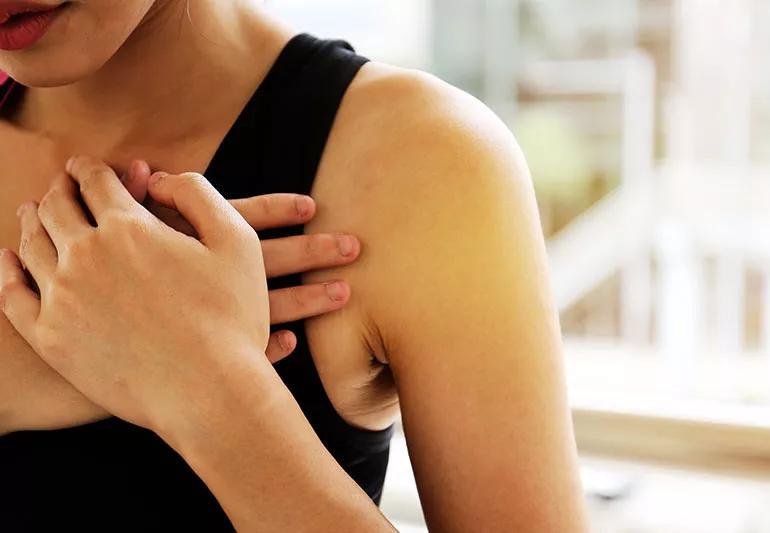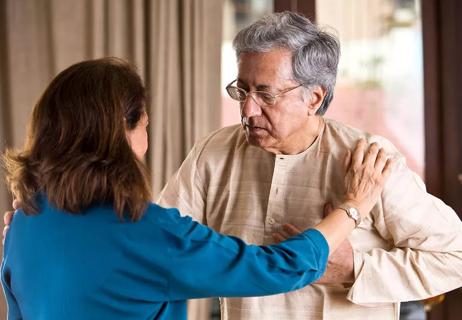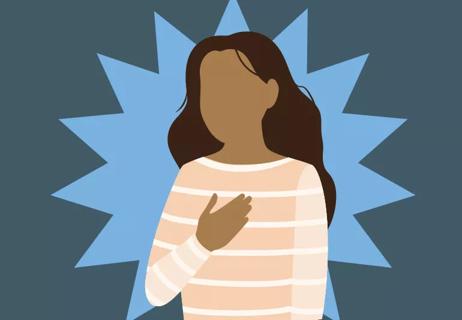Learn the common causes of chest pain, especially if you're very active

You’re young. You’re an athlete. So why does your chest hurt? After all, don’t heart problems strike older, less active people?
Advertisement
Cleveland Clinic is a non-profit academic medical center. Advertising on our site helps support our mission. We do not endorse non-Cleveland Clinic products or services. Policy
Most of the time, that’s true. But no one is immune to heart problems, and symptoms are ignored at our peril.
You might be surprised to learn that chest pain is actually more common in athletes than it is in sedentary people. “Luckily, in young athletes, it typically isn’t a sign of heart trouble,” says sports cardiologist Tamanna Singh, MD. A medical evaluation can help you be sure.
If heart problems are ruled out, determining the exact cause of your chest pains can often be tricky. Check out these common causes of chest pains in young athletes — and learn what you should do if and when pain strikes.
Sports can cause a lot of wear and tear on the body, and sometimes you can feel it in your chest. Athletes such as boxers, football players and lacrosse players often receive hard hits to their chests, which can bruise or fracture their ribs and cause intense pain.
Injury to the chest as well as constant, repetitive movement with intense training can also cause costochondritis, an inflammation of the cartilage that connects the ribs to the breastbone. It’s common in rowers, competitive weightlifters, tennis players and other athletes.
Athletes also may experience Tietze’s syndrome, an inflammatory disorder that affects the chest wall cartilage. And we have all experienced “stitches.” Most common when athletes start a training program, these are usually just muscle spasms.
Advertisement
Precordial catch syndrome causes sharp localized pains that strike during deep breathing, most often in young adults. While the condition is benign, the cause is unclear.
Athletes are often high achievers, competitive and motivated. “However, anxiety and even panic disorders and depression are not uncommon in young athletes,” says Dr. Singh. These conditions can result in spikes in heart rate or blood pressure as well as hyperventilation (rapid deep breathing), which can contribute to chest pains.
Stimulants such as caffeine, which are found in many energy drinks, can also speed up the heart, increase blood pressure and contribute to the problem.
Athletes are at increased risk of gastrointestinal (GI) issues that cause chest pains. This can be related to the way you eat, what you eat and how you exercise. “For instance, athletes often put themselves through periods of fasting and feasting, which can cause stomach upset,” says Dr. Singh.
What’s more, gastroesophageal reflux disease (GERD, or heartburn) is common among athletes and is easy to mistake for heart pains (hence the more common term for GERD, “heartburn”). That’s because when you’re training, food moves more slowly from your stomach into your intestines. In response to training, the small muscular band (sphincter) around the bottom of your esophagus can relax, allowing food and acid in your stomach to rise into your esophagus and cause a burning sensation. Also, tensing your abdominal muscles during exercise increases the pressure in your stomach, thereby forcing your stomach contents up into your esophagus.
“Medications you may take for pain such as nonsteroidal anti-inflammatory drugs (ibuprofen, naproxen, etc.) can irritate the lining of the stomach, also contributing to GI upset and chest pains,” Dr. Singh adds.
When chest pain strikes during or immediately after exercise, the most common cause is a spasm of the lungs’ small airways. Called exercise-induced bronchospasm (EIB), it can cause sharp chest pains and make breathing difficult. This can often be worse at certain times of the year or when exercising in certain environments.
You may need to visit a pulmonologist for adequate testing to determine if EIB is the root of your chest pain. The good news is that treatment often results in improved athletic performance.
Rare, but more serious lung issues include pneumothorax, when air leaks into the space between your lungs and your chest wall, and pulmonary embolism, blood clots in one or more of the lungs’ arteries, which can occur after orthopaedic surgery or prolonged periods of rest after an injury.
In athletes who train or compete outside, exposure to the elements can increase the risk of viral and bacterial lung infections, which can result in either pneumonia or pleurisy, inflammation of the tissues that line the lungs and chest cavity. “The inflammation feels like a very sharp pain that is most severe when you breathe in,” Dr. Singh notes.
Advertisement
In athletes 35 and older, the most common cardiac cause of chest pain is angina. Angina is caused by reduced blood flow to the heart muscle as a result of coronary artery disease. The pain is often experienced with exercise and eases up with rest.
In younger athletes, cardiac chest pains are most commonly related to congenital heart defects, meaning you were born with the problem. These include:
However, not all heart conditions that cause chest pains in athletes exist at birth. Myocarditis, an inflammation in the heart’s muscle, and pericarditis, inflammation of the membrane that surrounds the heart, are often caused by a virus and can be exacerbated during exercise. With respect to COVID-19, current athlete studies suggest that the rate of incidence of myocarditis is extremely low.
“If you feel a pain in your chest, don’t try to just push through it,” Dr. Singh says. Stop exercise immediately, let your trainer know what’s going on and recognize these signs:
Advertisement
Heart problems contribute to only about 5% of chest pains in young athletes, but these are the ones no one wants to miss. Athlete or not, chest pains are always cause for concern and deserve prompt medical attention.
Advertisement
Learn more about our editorial process.
Advertisement

Feelings of stress or anxiety can cause an increase in hormones and a tightening of the chest muscles, which can lead to chest pain

If your provider has ruled out a serious cause, you can treat chest pain at home with antacids, inhalers or anti-inflammatory medications

Don’t ignore chest pressure that lingers and can’t be explained

Most chest pain in kids isn’t worrisome, but there are some symptoms that deserve attention

Not all chest discomfort is a symptom of a heart attack

Why the condition, also called jackhammer esophagus, is missed

Knowing the difference may not be as easy as you think

If you’re feeling short of breath, sleep can be tough — propping yourself up or sleeping on your side may help

If you fear the unknown or find yourself needing reassurance often, you may identify with this attachment style

If you’re looking to boost your gut health, it’s better to get fiber from whole foods